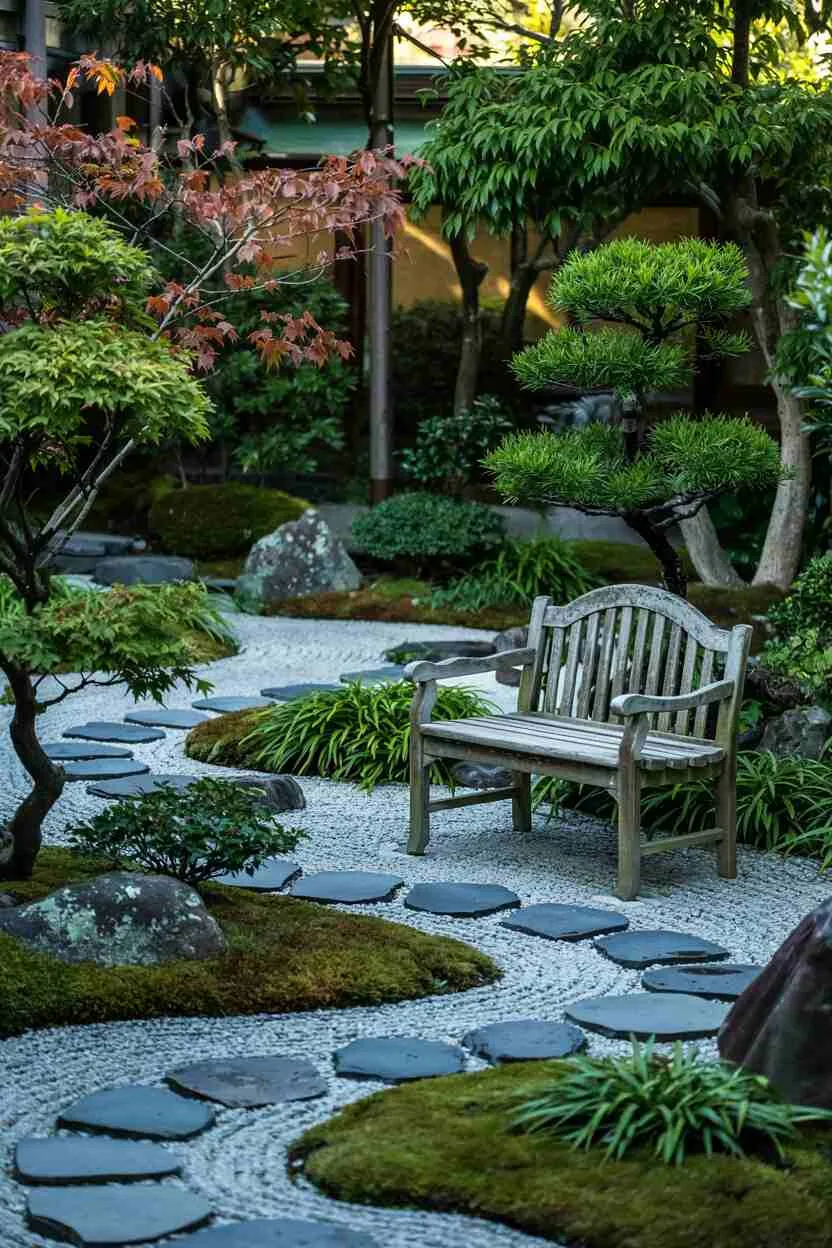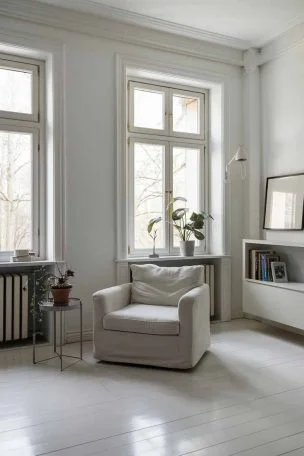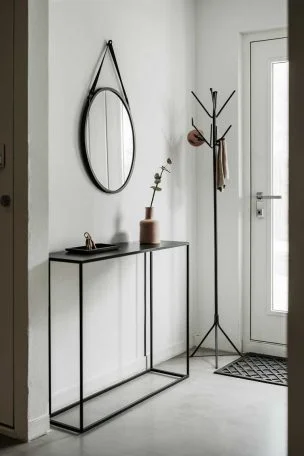In a world that constantly demands more, Japanese minimalism is a thoughtful alternative—a philosophy that invites us to consider what matters and let go of the rest.
This approach isn’t simply about owning fewer things; it’s about creating space for what truly adds value to life.
The Japanese minimalism lifestyle has captured global attention as people seek relief from overwhelming consumerism, offering a path toward greater peace, clarity, and satisfaction through intentional simplicity.
Origins and Philosophy of Japanese Minimalism
Japanese minimalism has deep historical roots dating back centuries, drawing significant inspiration from Zen Buddhism and its focus on mindfulness.
This philosophy developed prominently during the Muromachi period (1336-1573) as part of Higashiyama culture, making it distinct from Western minimalism that emerged from mid-20th-century art movements.
What makes Japanese minimalism particularly meaningful is its scope—it goes beyond design principles to represent a complete approach to living.
This holistic philosophy encourages full presence in daily activities, from morning rituals to the thoughtful arrangement of living spaces.
The traditional Japanese view sees simplicity not as deprivation but as freedom, creating room for contemplation and connection with what matters most.
Core Principles of Japanese Minimalism
Valuing Quality Over Volume
At the heart of Japanese minimalism lies the commitment to choosing fewer, better items that provide lasting satisfaction.
This approach transforms consumption from mindless accumulation to thoughtful selection.
By investing in high-quality, well-crafted items, Japanese minimalism naturally promotes sustainability.
When possessions are chosen with care and built to last, they become meaningful companions rather than temporary placeholders, reducing the cycle of buying and discarding that characterizes much of modern consumption.
Function and Purpose in Everything
Japanese minimalism asks that every object serve a clear purpose, contributing to the harmony of your space and life.
This focus on functionality keeps homes free from unnecessary items while filled with things that genuinely improve daily living.
This principle extends beyond physical possessions to how we spend our time and energy.
It prompts the question: Does this activity, commitment, or relationship serve a meaningful purpose?
This evaluation helps create a life aligned with personal values rather than external expectations.
The Power of Empty Space
One of the most distinctive aspects of Japanese minimalism is its celebration of emptiness.
Where many Western approaches view empty space as something to fill, Japanese philosophy sees it as an essential element of balance and beauty.
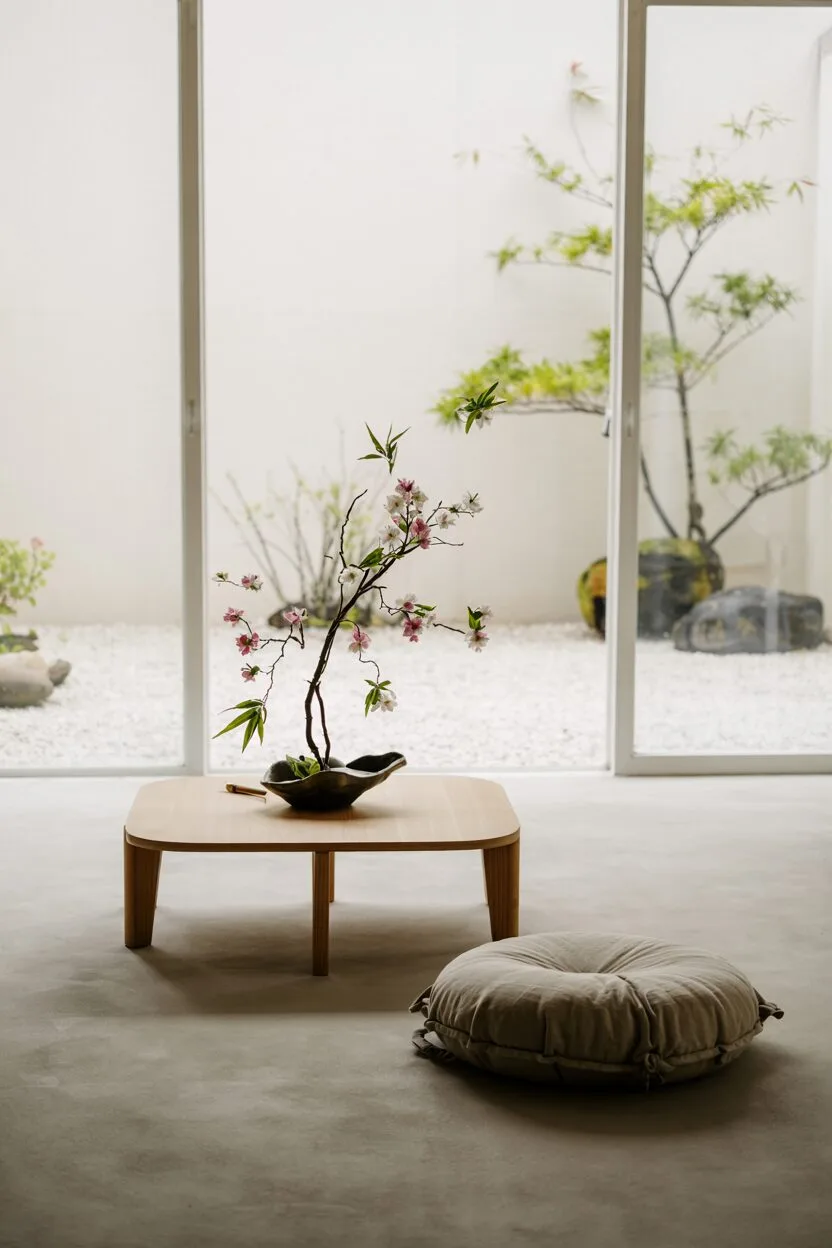
This intentional emptiness, known as “ma” in Japanese, provides room for both the eye and mind to rest.
By resisting the urge to fill every corner, Japanese minimalism creates an atmosphere of calm that contrasts sharply with the visual noise of cluttered environments.
Wabi-Sabi: Finding Beauty in Imperfection
Wabi-Sabi represents a uniquely Japanese perspective that embraces imperfection, impermanence, and the incomplete.
This concept completely transforms conventional beauty standards by celebrating what’s worn, weathered, and imperfect.
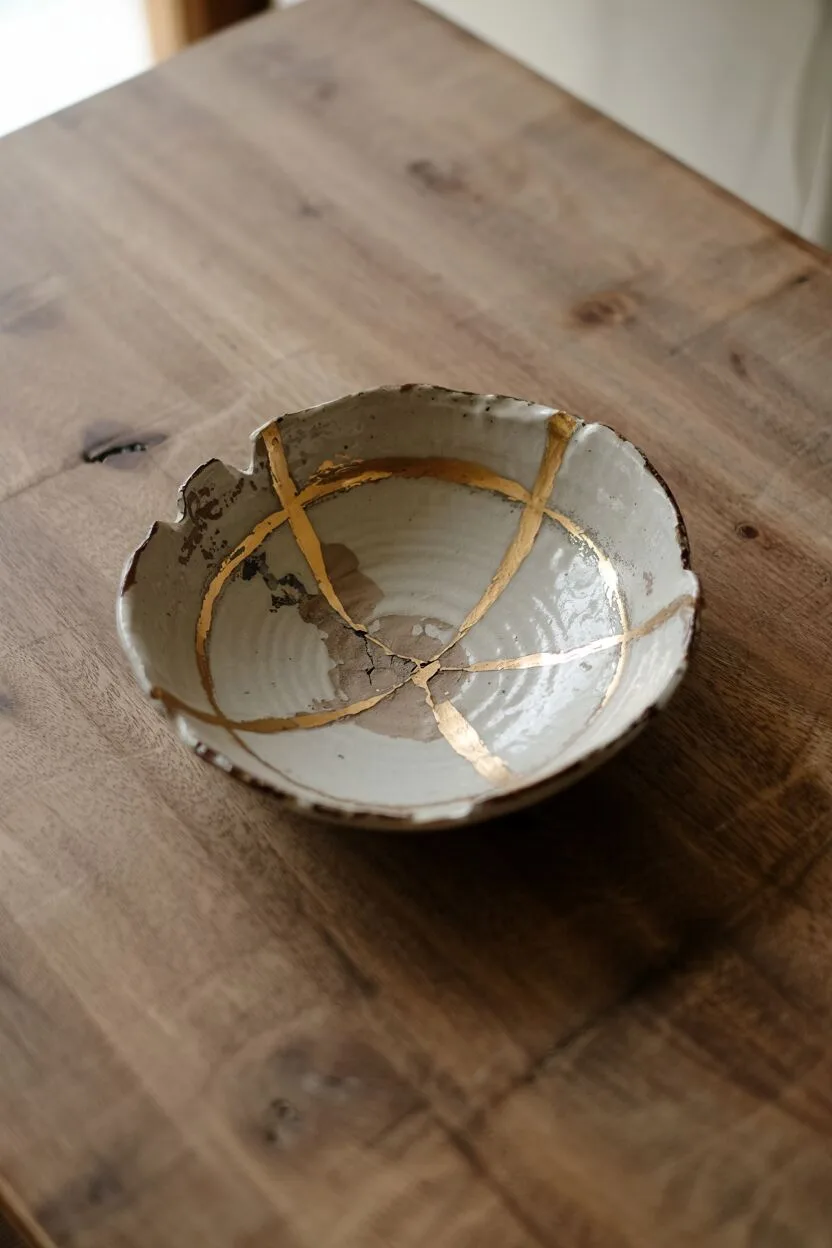
While Western minimalism often seeks flawless perfection, Wabi-Sabi finds deep beauty in natural aging processes and minor flaws.
This approach creates a more authentic relationship with our possessions and ourselves, valuing character over conventional perfection.
Practicing Mindfulness Every Day
Central to Japanese minimalism is the practice of mindfulness—being fully present with current activities and surroundings.
This principle encourages appreciation for life’s quiet moments and finding joy in simple daily practices.
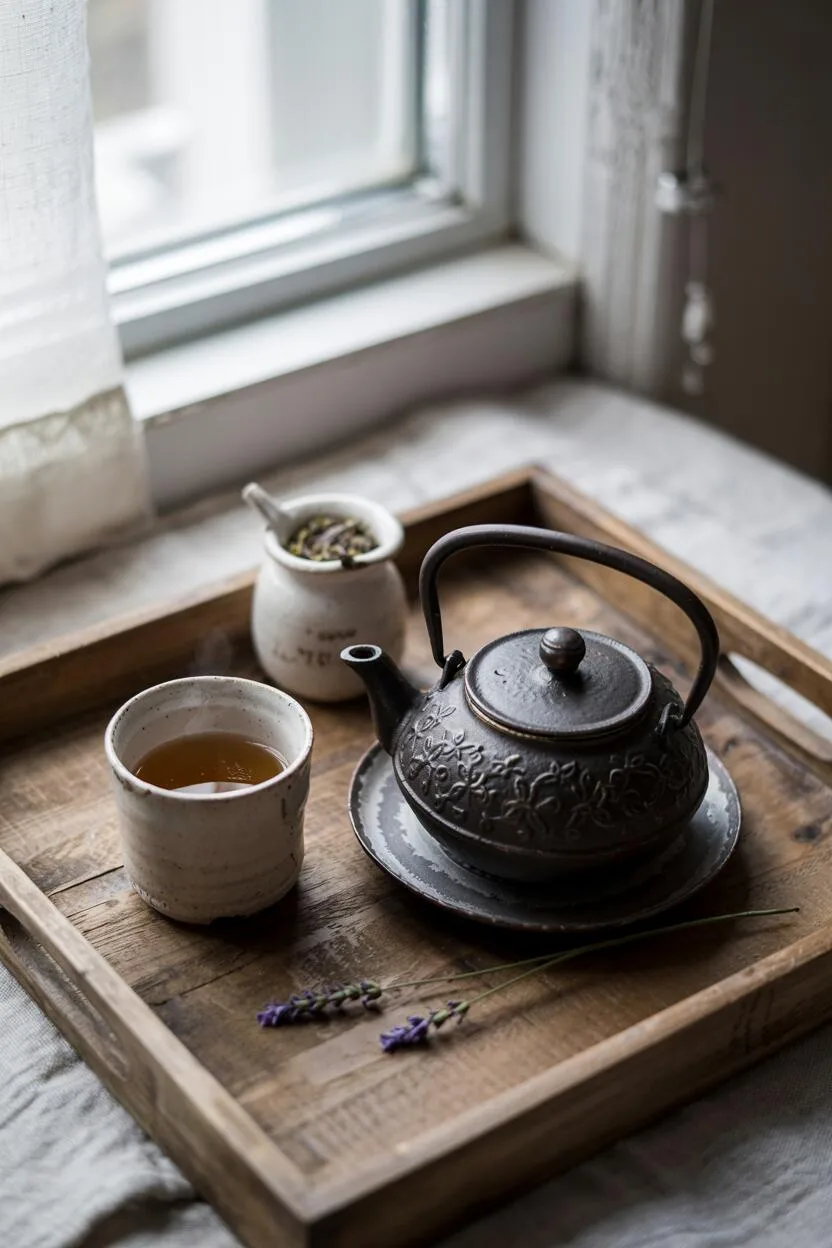
Practices like mindful tea preparation, nature walks, or moments of quiet reflection create rhythms of intentionality throughout the day.
These don’t require elaborate setups—even brief moments of focused attention can cultivate the mindfulness that grounds Japanese minimalist living.
Different Approaches to Japanese Minimalist Living
The KonMari Method
Marie Kondo’s approach has brought Japanese minimalism to global attention with her focus on keeping only items that “spark joy.”
This method has been published in 38 countries, showing worldwide interest in Japanese simplicity.
Kondo’s philosophy goes beyond organization to include mindful practices that honor possessions and clear energy.
Her techniques help transform cluttered spaces into peaceful environments that support wellbeing and intentional living.
Danshari Movement
The Danshari movement represents a more radical approach to minimalism, popularized by Fumio Sasaki.
His extreme minimalism—living with just 150 possessions in a small apartment—demonstrates how dramatically reducing possessions can transform life.
Sasaki credits his minimalist lifestyle with personal transformation, including improved health, greater happiness, and increased energy.
His philosophy emphasizes that minimalism isn’t about arbitrary limits but about how possessions make you feel—free rather than burdened.
Zen Minimalism
Zen minimalism merges principles of Zen Buddhism with minimalist practices to create a comprehensive approach prioritizing calm, clarity, and purpose.
This practice goes beyond physical decluttering to emphasize mental and emotional clarity.
In today’s chaotic world, Zen minimalism offers an alternative that invites practitioners to slow down and focus on what truly matters.
Its practices include meditation, mindful movement, and creating spaces that support inner peace.
Wabi-Sabi Minimalism
Wabi-Sabi minimalism uniquely blends the Japanese concept of finding beauty in imperfection with minimalist living principles.
This approach creates spaces that feel both peaceful and authentic, valuing what’s real over what’s perfect.
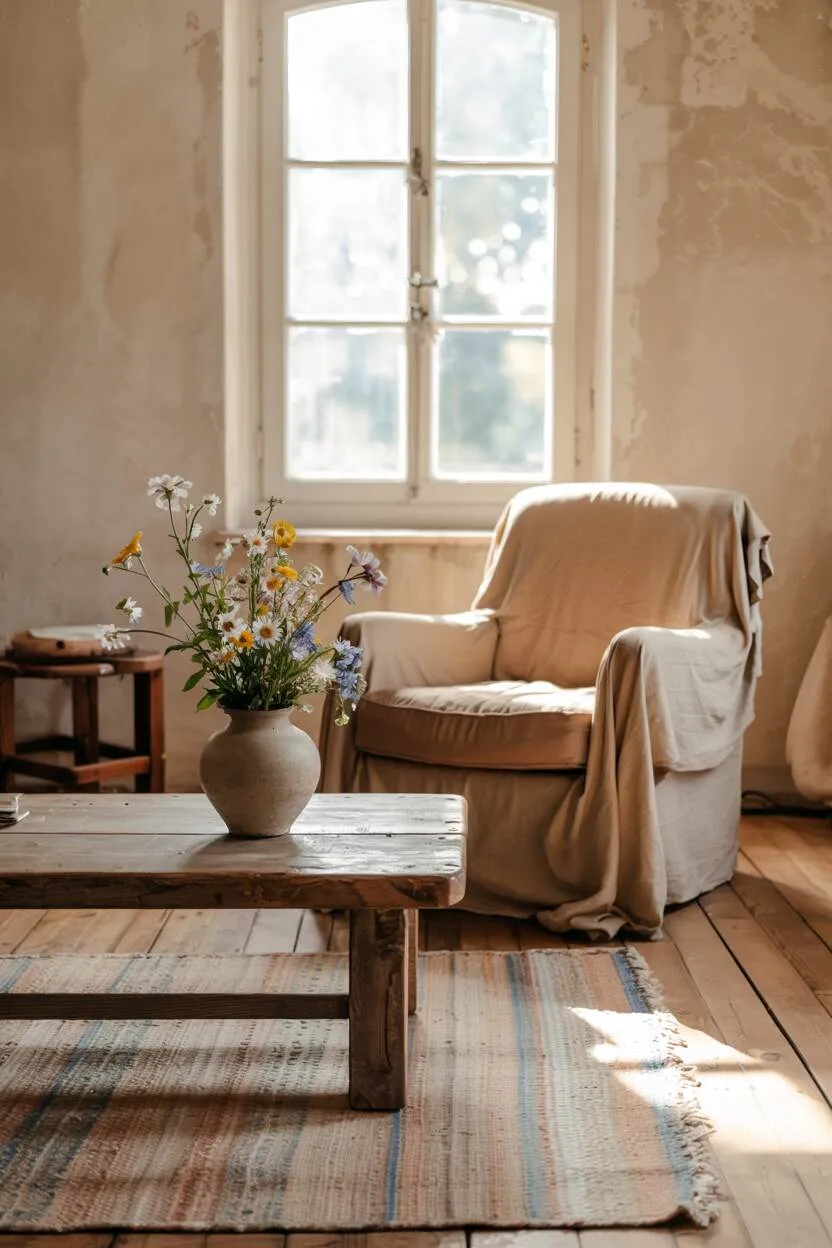
This philosophy offers a refreshing counterpoint to polished social media aesthetics, celebrating the character that develops through use and time.
Wabi-Sabi minimalism transforms how we see our homes and possessions, finding beauty in honest imperfection rather than artificial perfection.
Benefits of Embracing Japanese Minimalism
Mental Well-being and Stress Reduction
Japanese minimalism significantly impacts mental health by reducing the overwhelm that comes from excess.
Research increasingly shows connections between cluttered environments and increased stress, anxiety, and difficulty focusing.
By creating spaces characterized by simplicity and intention, practitioners often experience greater calm and mental clarity.
This environmental shift can improve mood, reduce stress levels, and create a foundation for overall well-being.
Transforming Your Relationship with Possessions
Adopting Japanese minimalist principles fundamentally changes how we relate to material goods.
The shift from mindless accumulation to thoughtful curation creates greater appreciation for what we already have.
Many practitioners report feeling liberated rather than deprived when reducing possessions.
This freedom comes from less time spent maintaining, organizing, and worrying about things, allowing more energy for experiences and relationships that matter.
Positive Environmental Impact
The minimalist emphasis on quality over quantity naturally aligns with environmental sustainability.
By purchasing fewer, better-made items that last longer, practitioners reduce waste and resource consumption.
This conscious approach to consumption represents a meaningful alternative to environmentally damaging fast fashion and disposable goods cultures.
Japanese minimalism offers personal benefits while contributing to broader ecological health.
Finding Focus and Clarity
By eliminating excess distractions, Japanese minimalism creates space for greater focus on priorities and meaningful activities.
This clarity extends beyond the home environment to influence how time and energy are allocated.
Many report increased productivity and creativity when working in simplified environments.
With fewer visual and mental distractions, it becomes easier to enter states of flow and sustained concentration, whether for creative work, professional tasks, or personal projects.
Practical Steps to Start Your Japanese Minimalism Journey
Mindful Decluttering Approaches
Implementing Japanese minimalism begins with thoughtful decluttering, which differs from simply organizing existing possessions.
Various approaches offer different pathways to simplification.
Whether following the KonMari Method’s category-based approach or starting with a single space, effective decluttering involves mindful consideration rather than arbitrary rules.
The goal is to create an environment that supports your values and well-being.
Creating Spaces That Breathe
Japanese minimalist spaces prioritize functionality, natural elements, and thoughtful arrangement.
Traditional design elements include natural materials, neutral color palettes, and intentional negative space.
Even small changes—like removing unnecessary decorations or organizing cluttered areas—can significantly transform how a space feels and functions.
The aim is to create environments where every element serves a purpose and contributes to overall harmony.
Developing Thoughtful Consumption Habits
Perhaps the most crucial aspect of sustaining a minimalist lifestyle involves transforming consumption patterns from impulsive to intentional.
This means carefully evaluating potential purchases based on genuine need and alignment with personal values.
Helpful practices include waiting periods before purchases, researching quality, and regularly reflecting on consumption patterns.
These habits help maintain the clarity and intention central to Japanese minimalism in a culture that constantly pushes for more.
Building Daily Rituals and Practices
Japanese minimalism incorporates daily rituals that foster mindfulness and appreciation for simple pleasures.
These practices help anchor your day in presence and intention.
Rituals might include mindful morning routines, evening reflection, regular nature walks, or moments of quiet contemplation.
These don’t require elaborate preparation—even brief moments of present-focused attention can cultivate the mindfulness central to Japanese minimalist living.
Conclusion
The Japanese minimalism lifestyle offers profound wisdom for contemporary living.
By embracing its principles—quality over quantity, function and purpose, appreciation for empty space, finding beauty in imperfection, and practicing mindfulness—we can create homes and lives with greater intention and peace.
The journey toward minimalism doesn’t require a dramatic transformation all at once.
Small, consistent steps toward simplicity create meaningful change over time.
Whether you’re drawn to the KonMari Method, Danshari principles, Zen practices, or Wabi-Sabi philosophy, Japanese minimalism offers versatile approaches for creating the space, both physical and mental, to focus on what truly matters.
In a world that constantly demands more, Japanese minimalism reminds us that often, less truly is more.
By thoughtfully curating our possessions, spaces, and activities, we create room for what brings authentic joy and meaning, not just more stuff, but more life.

